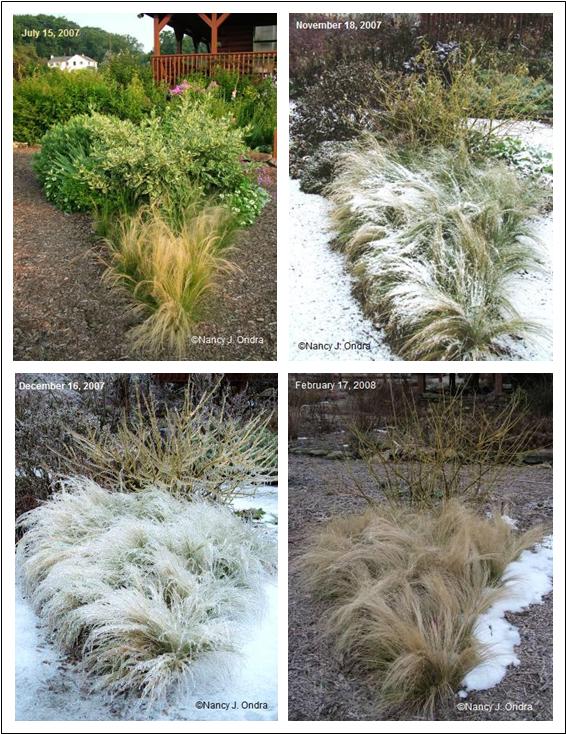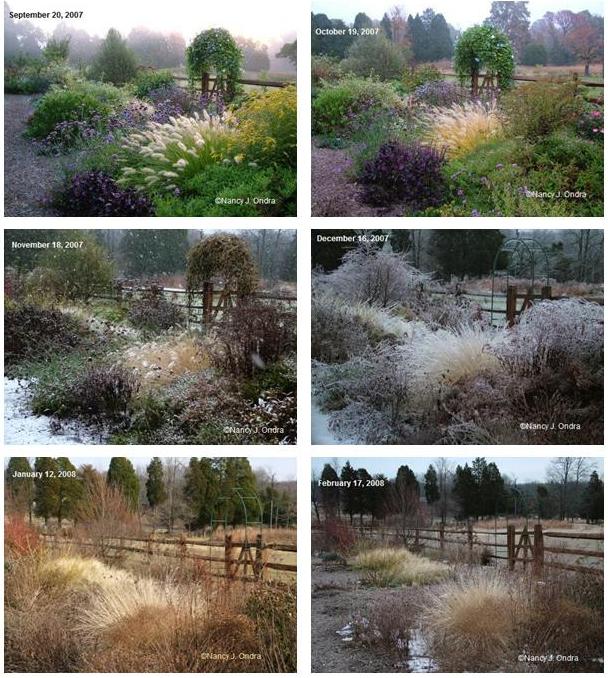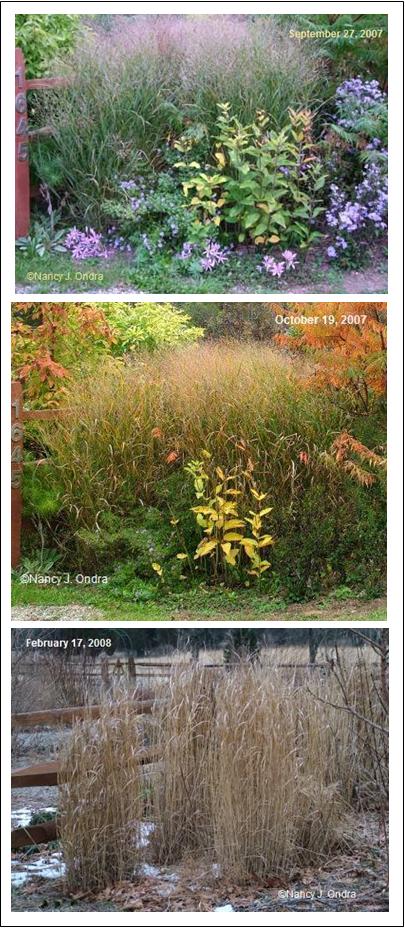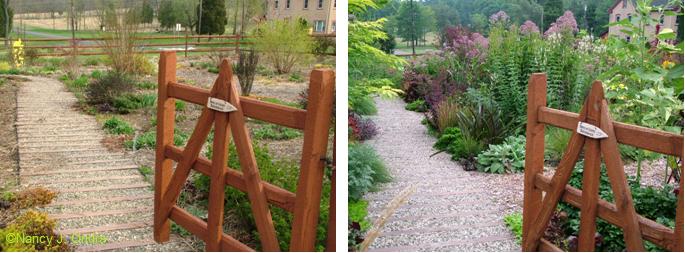Of all the many skills we gardeners have to learn, one of the most challenging – as well as the most valuable – is the ability to see into the future. We need to be able to predict how fast a plant will grow, so we can figure out how much space to give it at planting time. We need to be able to envision what shape it will ultimately have (or can be coaxed into), so we can figure out if it will be suitable for a particular site. And we need to be able to guess when it will be at its peak, so we can select partners to complement its beauty. Being able to predict the future isn’t a skill we can pick up in just a few hours, or even a few seasons. It’s a learning process that lasts as long as our gardens do.
Fortunately, we have some help in all of this. We can refer to the writings of other gardeners to find out how tall and wide a plant is supposed to get, what shape it’s supposed to have, and when it’s supposed to bloom. The tricky part is reconciling all these facts about what a plant is supposed to do with what it actually does in our own gardens.
Gardener: “Look, you stupid plant – this book says that you grow 2 feet tall and bloom in June. But you’re already 3 feet tall, and you’re not showing any signs of flowering, even though June is almost over. What’s up with that?”
Plant: “Plants don’t read books. Duh.”
I guess I shouldn’t be knocking books as a source of knowledge for gardeners. That’s what I started with as a teenager, after all – with Ortho’s All about Perennials and the Bush-Browns’ America’s Garden Book – and now I write books of my own to share what I’ve learned over the last 25+ years. But you can’t beat the value of seeing for yourself how plants really grow in your particular area, by visiting other private and public gardens as often as you can as well as experimenting with and observing plants in your own space. And now, we have the wonderful world of garden blogging, which allows us to make virtual visits to other gardens in our area. Find a local garden blogger who regularly participates in Bloom Day, and you’ve found an invaluable resource for predicting bloom times for plants in your own garden.
 One of the best ways to learn how to look forward, though, is to look back. And this is where a camera becomes one of the most important tools any gardener can own. Taking pictures of the same space, the same combination, or the same plant though one season, and over a period of years, provides a custom-made visual record that’s priceless for honing your planning skills. You still can’t get too complacent, thanks to the vagaries of weather patterns, pests, and other variables that can affect growth rates and bloom times. But if you’ve already figured out the basics of spacing your plants properly and choosing appropriate companions, then dealing with these variables becomes more of an interesting challenge than an additional frustration.
One of the best ways to learn how to look forward, though, is to look back. And this is where a camera becomes one of the most important tools any gardener can own. Taking pictures of the same space, the same combination, or the same plant though one season, and over a period of years, provides a custom-made visual record that’s priceless for honing your planning skills. You still can’t get too complacent, thanks to the vagaries of weather patterns, pests, and other variables that can affect growth rates and bloom times. But if you’ve already figured out the basics of spacing your plants properly and choosing appropriate companions, then dealing with these variables becomes more of an interesting challenge than an additional frustration.
So this month, how about sharing some of your stories about the influence of time on your garden?
- Tell us your tale of woe about drastically underestimating how fast or big a plant would grow, and what you learned from the experience.
- Did you inherit an overgrown garden when you moved into a new home? Fixing someone else’s mistakes can be just as valuable a learning experience as fixing your own mistakes, without the added misery of having inflicted the problems on yourself. Tell – or even better, show – us how you reclaimed the space.
- Did you remember to take “before” pictures the last time you started a new garden? Shoot some new ones from the same angle to show off its progress. (Most people would call these “before and after” pictures, but “after” implies that something’s finished, and we gardeners know that our work is never done!)
- Is there a particular plant or part of your garden that you photograph frequently through the seasons, or over the years? Put some of the images together into a photo progression to show how it changes.
- Tell us about your own ways of learning about how plants and gardens change over time. Do you keep detailed written or visual records of the heights, widths, and bloom times of your plants over the years? Is there a public or private garden that you’ve found especially useful for training your eye to see how plants and plantings mature?
- On a more philospohical level: Are you a “now” gardener or a “later” gardener? Do you prefer to pack plants in for an immediate effect, then deal with moving, removing, or replacing them often? Or do you plan your plantings for the long term, giving them all plenty of space to reach their potential and finding ways to fill around them in the meantime?
 If you’re new to the GGW Garden Bloggers Design Workshop, here’s how it works: Write a post on anything related to time in the garden on your own blog and give us the link below, or simply leave a comment if you don’t want to do a separate post. If you’ve written about the topic in the past, those links are equally welcome; it’s not necessary to create a new post to participate.
If you’re new to the GGW Garden Bloggers Design Workshop, here’s how it works: Write a post on anything related to time in the garden on your own blog and give us the link below, or simply leave a comment if you don’t want to do a separate post. If you’ve written about the topic in the past, those links are equally welcome; it’s not necessary to create a new post to participate.
I’ll gather all of the links into one summary post for easy reference. It’ll go up on August 29, so please get your links in by the 27th if you want to be included in the wrap-up.
If you’re interested in checking out previous Garden Bloggers’ Design Workshops, you can find them here:
 Paths and Walkways
Paths and Walkways
Fences and Walls
Arbors and Pergolas
Color in the Garden
Container Plantings
Front-Yard Gardens
Stone in the Garden
Decks, Porches, and Patios
Garden Whimsy
Trellises and Screens
Water in the Garden
Sheds and Outbuildings
Incorporating Edibles
Kids in the Garden
Labeling and Record-Keeping
Pets in the Garden
Wildlife in the Garden
Water-Wise Gardening
Made for the Shade
Front Yards Revisited
Designing with Bulbs
Don’t forget that you’re all welcome to go back and add links to these older posts at any time.
And if you’re on Facebook and enjoy the Garden Bloggers’ Design Workshops, please visit our GBDW page and become a fan!

